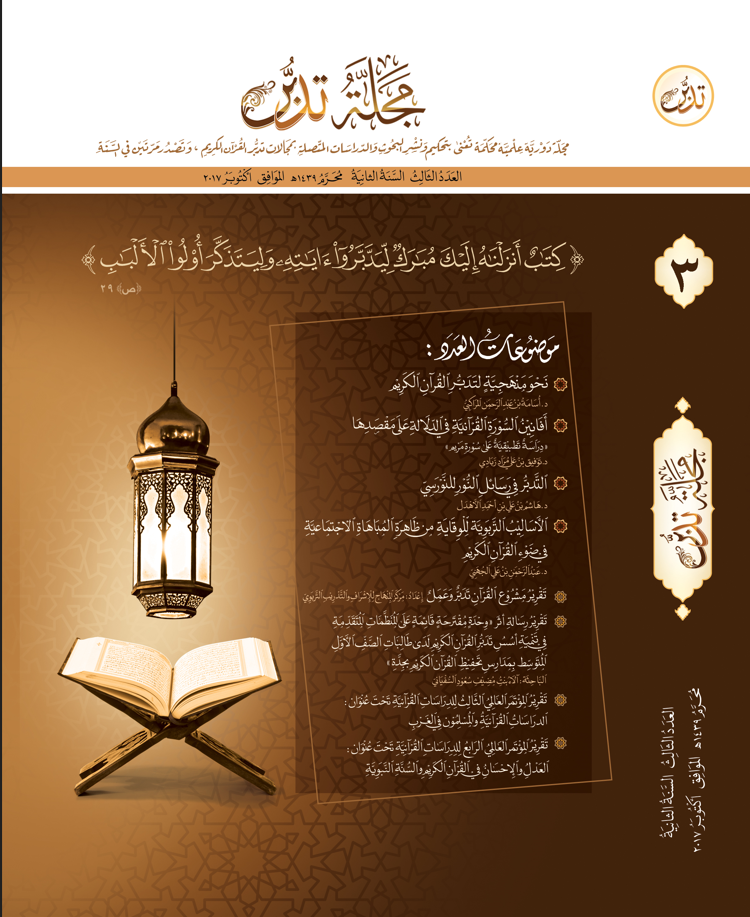Towards a Methodology of Understanding the Qur’an
Main Article Content
Abstract
This treatise aims to give a definitive answer to the major
question: ‘How to achieve an in-depth understanding of
the Qur’an?’ It uses the inductive method and examines
the relevant heritage in an attempt to identify a proper
method and a clear way, in an attempt to add to what our
predecessors did so as to continue the creative process
that aims to achieve a better understanding of the Qur’an.
This treatise aims to define certain methods of meditation
that enable the reciter of the Qur’an and its students to gain
a better understanding of it. It will help scholars and the
public at large in their approach to the Qur’an to understand
its message and infinite wisdom. The treatise starts by
explaining the concept of in-depth understanding and
how it is different from other terms that are close to it in
meaning, such as commentary, contemplation, consideration,
deduction, etc. It briefly explains the importance of
understanding the Qur’an, its status, conditions, types,
benefits, how to achieve it, and what prevents it. It goes
on to explain in a little more detail some methodologies
of achieving a good understanding of the Qur’an, and
concludes by mentioning the most common mistakes in the
process of meditation over the Qur’an.
Downloads
Article Details
Conference Proceedings Volume
Section

This work is licensed under a Creative Commons Attribution-NonCommercial 4.0 International License.
Indicating to the intellectual property, copyrights, and open access right:
According to the Budapest Initiative 2002; tadabbur Journal, which is issued by Khibrat Taibah For Research and Studies in Medina, provides free open access to its publications, and applies the Creative Commons license:
Attribution- Non-Commercial 4.0 International (CC BY-NC 4.0) for the works it publishes from peer-reviewed scientific research and reports, which are freely available on the Internet, and which allows any user to read, download, copy, and distribute (Convert), print, search, or create links to the full texts of the journal’s research and publications, and analyze them in an automatic manner for discovering them, sending them as software data, or using them for any other legal purpose, without financial, legal, or other technical barriers beyond those related to Internet access.
It also highlight that the only barrier to reproduction and distribution, and the only role of copyright in this field, is the necessity of granting the authors of the journal’s research and reports and the publisher the journal; Control over their works, and the right to official recognition and reference citations.





